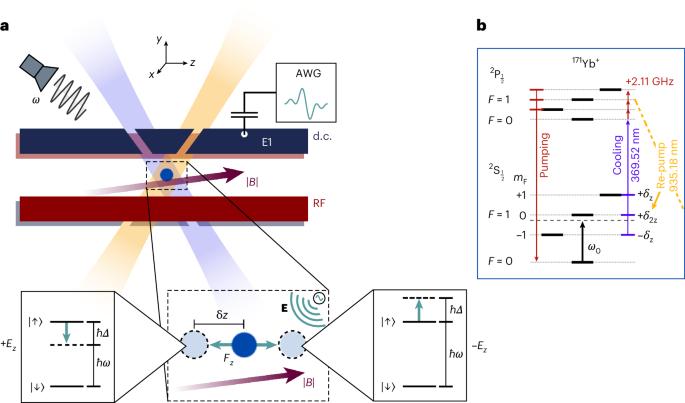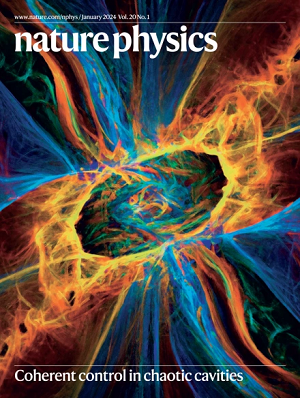磁场梯度下的超灵敏单离子电测法
IF 18.4
1区 物理与天体物理
Q1 PHYSICS, MULTIDISCIPLINARY
引用次数: 0
摘要
捕获离子中的超精细能级提供了长寿命的自旋态。此外,这些带电粒子的运动与电场扰动强烈耦合。这些特性使捕获离子成为电场量子传感的理想平台。然而,自旋态不表现出与电场的强内在耦合,限制了可实现的灵敏度。在这里,我们通过使用静态磁场梯度来放大电场扰动与自旋态之间的耦合。由此,由外加电场扰动引起的被捕获离子的位移被映射为内部自旋态的能级分裂的瞬时变化。这种梯度介导的电场与自旋的耦合使电测中使用完善的磁强计方案成为可能,从而可以实现对直流和交流电场的极其敏感的测量。我们还采用了旋转框架松弛测量技术,并演示了我们的量子传感器作为电场噪声频谱分析仪的使用。最后,我们描述了一组硬件修改,能够实现灵敏度进一步提高高达六个数量级。本文章由计算机程序翻译,如有差异,请以英文原文为准。


Ultrasensitive single-ion electrometry in a magnetic field gradient
Hyperfine energy levels in trapped ions offer long-lived spin states. In addition, the motion of these charged particles couples strongly to electric field perturbations. These characteristics make trapped ions attractive platforms for the quantum sensing of electric fields. However, the spin states do not exhibit a strong intrinsic coupling to electric fields, lim iting the achievable sensitivity. Here, we amplify the coupling between electric field perturbations and the spin states by using a static magnetic field gradient. Displacements of the trapped ion resulting from the applied electric field perturbations are thereby mapped to an instantaneous change in the energy-level splitting of the internal spin states. This gradient-mediated coupling of the electric field to the spin enables the use of well-established magnetometry protocols for electrometry, making it possible to achieve extremely sensitive measurements of d.c. and a.c. electric fields. We also employ a rotating-frame relaxometry technique and demonstrate the use of our quantum sensor as an electric field noise spectrum analyser. Finally, we describe a set of hardware modifications that are capable of achieving a further improvement in sensitivity by up to six orders of magnitude. Trapped ions are promising for electrometry but limited by their weak intrinsic spin coupling to electric fields. Now it is shown that using a magnetic field gradient enhances sensitivity and enables precise measurements across subhertz to kilohertz frequencies.
求助全文
通过发布文献求助,成功后即可免费获取论文全文。
去求助
来源期刊

Nature Physics
物理-物理:综合
CiteScore
30.40
自引率
2.00%
发文量
349
审稿时长
4-8 weeks
期刊介绍:
Nature Physics is dedicated to publishing top-tier original research in physics with a fair and rigorous review process. It provides high visibility and access to a broad readership, maintaining high standards in copy editing and production, ensuring rapid publication, and maintaining independence from academic societies and other vested interests.
The journal presents two main research paper formats: Letters and Articles. Alongside primary research, Nature Physics serves as a central source for valuable information within the physics community through Review Articles, News & Views, Research Highlights covering crucial developments across the physics literature, Commentaries, Book Reviews, and Correspondence.
 求助内容:
求助内容: 应助结果提醒方式:
应助结果提醒方式:


